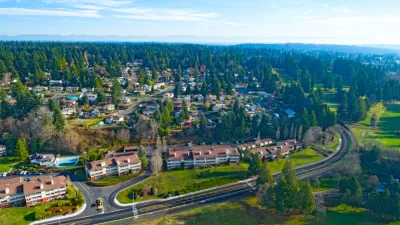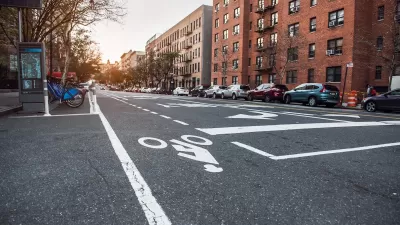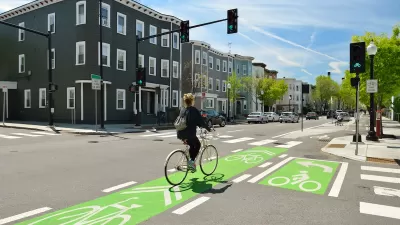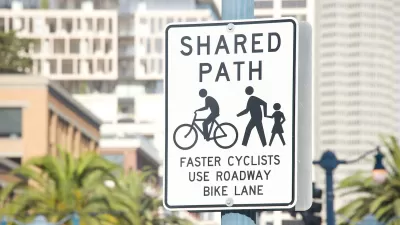A new requirement that mandates bike and pedestrian improvements on state road projects is starting to pay off with real commitments to Complete Streets infrastructure.

According to an article by The Urbanist’s Ryan Packer, Washington state’s new Complete Streets law is starting to pay off. Part of a legislative package known as Move Ahead Washington, the mandate requires the Washington State Department of Transportation (WSDOT) to “coordinate adding bike and pedestrian facilities when basic maintenance is planned.”
As Packer explains, “Any state highway projects over $500,000 in cost now require the state to evaluate whether gaps in both existing bicycle and pedestrian networks can be filled, and standards are required to be adhered to when it comes to separation between those facilities and automobile travel lanes.”
The law could soon prove itself in Edmonds, where a “full overhaul” of State Route 99 is underway. For Edmonds, the new requirements mean adding 4.5-foot bike lanes in each direction to their original road redesign plans. “The real time changes we see to accommodate the extra nine feet of space required are planned buffers and planting strips narrowing and the twelve foot business access-and-transit (BAT) lanes shrinking by one foot each. Otherwise the six travel lanes along the highway are unaffected.” These small but important changes, Packer notes, would have been left on the table without the Complete Streets law.
Packer details the funding allocated to Complete Streets and other projects around the state slated to get bike and pedestrian improvements. Optimistically, Packer concludes that “The new requirement has the potential to correct decades of oversights from local leaders and transportation officials when it comes to the bike and pedestrian networks on Washington’s state highways.”
FULL STORY: Washington’s Complete Streets Mandate Starts to Pay Dividends

Alabama: Trump Terminates Settlements for Black Communities Harmed By Raw Sewage
Trump deemed the landmark civil rights agreement “illegal DEI and environmental justice policy.”

Planetizen Federal Action Tracker
A weekly monitor of how Trump’s orders and actions are impacting planners and planning in America.

The 120 Year Old Tiny Home Villages That Sheltered San Francisco’s Earthquake Refugees
More than a century ago, San Francisco mobilized to house thousands of residents displaced by the 1906 earthquake. Could their strategy offer a model for the present?

LA’s Tree Emergency Goes Beyond Vandalism
After a vandal destroyed dozens of downtown LA trees, Mayor Karen Bass vowed to replace them. Days later, she slashed the city’s tree budget.

Sacramento Leads Nation With Bus-Mounted Bike Lane Enforcement Cameras
The city is the first to use its bus-mounted traffic enforcement system to cite drivers who park or drive in bike lanes.

Seattle Voters Approve Social Housing Referendum
Voters approved a corporate tax to fund the city’s housing authority despite an opposition campaign funded by Amazon and Microsoft.
Urban Design for Planners 1: Software Tools
This six-course series explores essential urban design concepts using open source software and equips planners with the tools they need to participate fully in the urban design process.
Planning for Universal Design
Learn the tools for implementing Universal Design in planning regulations.
Ada County Highway District
Clanton & Associates, Inc.
Jessamine County Fiscal Court
Institute for Housing and Urban Development Studies (IHS)
City of Grandview
Harvard GSD Executive Education
Toledo-Lucas County Plan Commissions
Salt Lake City
NYU Wagner Graduate School of Public Service





























